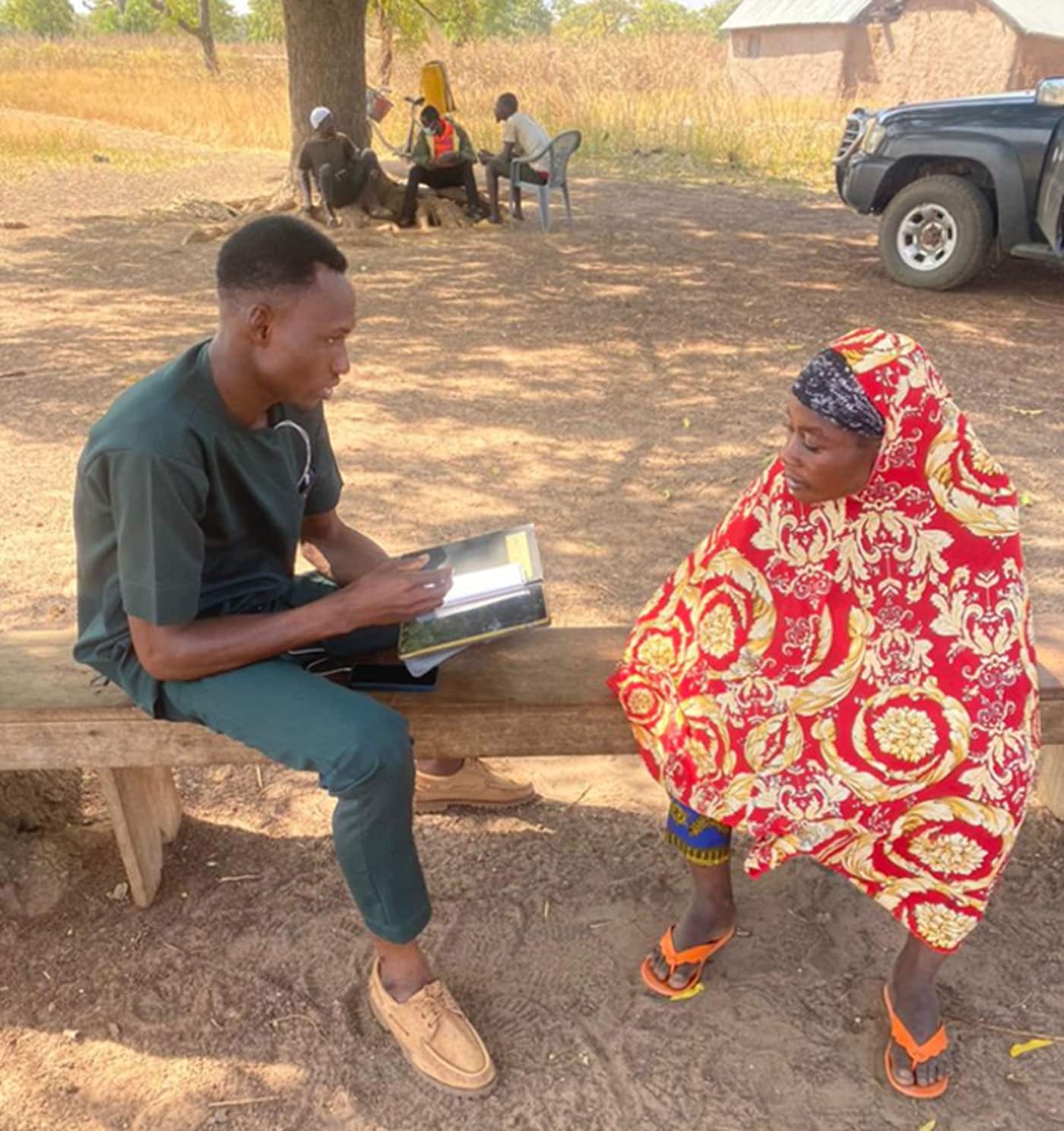Alhassan Nuhu Jinbaani, an agricultural researcher and innovator in Ghana, said this winter was the perfect time to launch his team’s effort to popularize a so-called “forgotten food”—the Bambara groundnut—and transform dryland agriculture in sub-Saharan Africa.
“It happened right after harvesting and in preparation for the next cropping season,” he explained to Grow Further. “The research project is also happening at a time when there are no improved varieties of Bambara groundnuts. Expectations of stakeholders and end-users of Bambara groundnut are therefore high.”
Jinbaani and his team launched their project with great fanfare, as well, including a formal kick-off ceremony and comprehensive media coverage. The idea is to spread the word as far as possible—the Bambara groundnut, once a “forgotten food,” is forgotten no more.
Reviving an overlooked crop
Jinbaani is a lead researcher at the Council for Industrial and Scientific Research’s Savanna Agriculture Research Institute (CSIR-SARI) in Tamale, Ghana. Regular readers of this newsletter will know CSIR-SARI as one of two recipients of the first Grow Further grants issued supporting innovation in smallholder farming research and development. In late 2023, Grow Further founder and CEO Peter Kelly traveled to Tamale to review CSIR-SARI’s ambitious plans to expand the cultivation of Bambara groundnuts in arid regions. The plant is famously drought-resistant and packed with nutrition–adapting farms to climate change while enhancing nutrition–and is mainly grown by women.
CSIR-SARI’s planning is now complete and grant funds are flowing, leaving only project execution and all the hard work that entails.
Peter was there again for the occasion of CSIR-SARI’s project launch, only this time remotely. “In attendance were 65 participants drawn from farmers, researchers, policymakers, traditional authorities, and the media,” Jinbaani recalled in an interview. “The CEO of Grow Further, Dr. Kelly, joined the ceremony virtually and made a presentation,” which was well received by everyone, he added.
Time and patience
When first contacted for an update on their research initiative, CSIR-SARI pleaded for more time, likely aware that the launch date was nearing and that there was a lot of work ahead of them to ensure that the official project launch was successful. We were happy to give them a few more weeks for that update.
The research project is also happening at a time when there are no improved varieties of Bambara groundnuts. Expectations of stakeholders and end-users of Bambara groundnut are therefore high.
Jinbaani now has more details to share with our members and newsletter readers, including details on how the launch ceremony went down and the media attention it generated. “Two national TV stations and 3 FM stations covered the launching, with an estimated total viewership and listening audience of 4 million people,” he said. This big media splash was central to CSIR-SARI’s plans, Jinbaani explained. “The essence of the launching was to publicize the project for public support and cooperation during its 3-year implementation period, to have input from key stakeholders on the project’s implementing regions, districts, and communities.”
He and his research team aren’t wasting any time.
CSIR-SARI researchers were trained in survey methodologies and in the software the team will use to compile their datasets. A few days following the launch, trained researchers spanned out to the field to begin conducting their surveys, starting with the Tolon area just outside Tamale. Researchers are hoping to connect with at least 600 respondents in 50 different agricultural regions where Bambara groundnuts could be cultivated.
Information first, then trials
The surveys are part of a critical data collection exercise. Jinbaani said his team wants to know the most desirable traits smallholder farmers are looking for when considering adding Bambara groundnuts to their fields. The traits farmers themselves most prefer will be those traits that CSIR-SARI will select for as the team begins lab breeding and growth trials. “Such desirable traits will be chosen from the pool of germplasm,” he explained. It’s a smart plan—ask the farmers what they most want in a drought-resistant Bambara groundnut, and then produce the varieties of this crop that boast those very traits, improving the odds that Bambara groundnut cultivation will be accepted by smallholder farming communities, hopefully taking off.
That’s not the only information the survey team is after.
Jinbaani said the survey questions are designed to gather information on smallholder farm household demographics, which farmers are now growing Bambara groundnuts, how they are growing this crop, household and community food security, and “gender dimensions in Bambara groundnut production,” among other details. The aim is to think ahead towards doing a study of whether the project worked without needing to ask farmers years from now to accurately remember the details of their life in 2023.
A busy year ahead
Grow Further’s grant to CSIR-SARI’s Bambara groundnut project has been recognized by the VACS Champions program run by the US Department of State. The launch of CSIR-SARI’s research in smallholder agriculture innovation garnered much media attention in Ghana.
Jinbaani and the researchers there are now fully aware that many interested individuals and institutions are following their work closely, wishing them great success and the best of luck. But they don’t necessarily have time to think about all that—there’s work to do, and the hard work is just beginning. “2024 will be a busy year,” Jinbaani said.
— Grow Further
Photo credit: CSIR-SARI researchers survey smallholder farmers just outside Tamale, Ghana. Alhassan Jinbaani.




